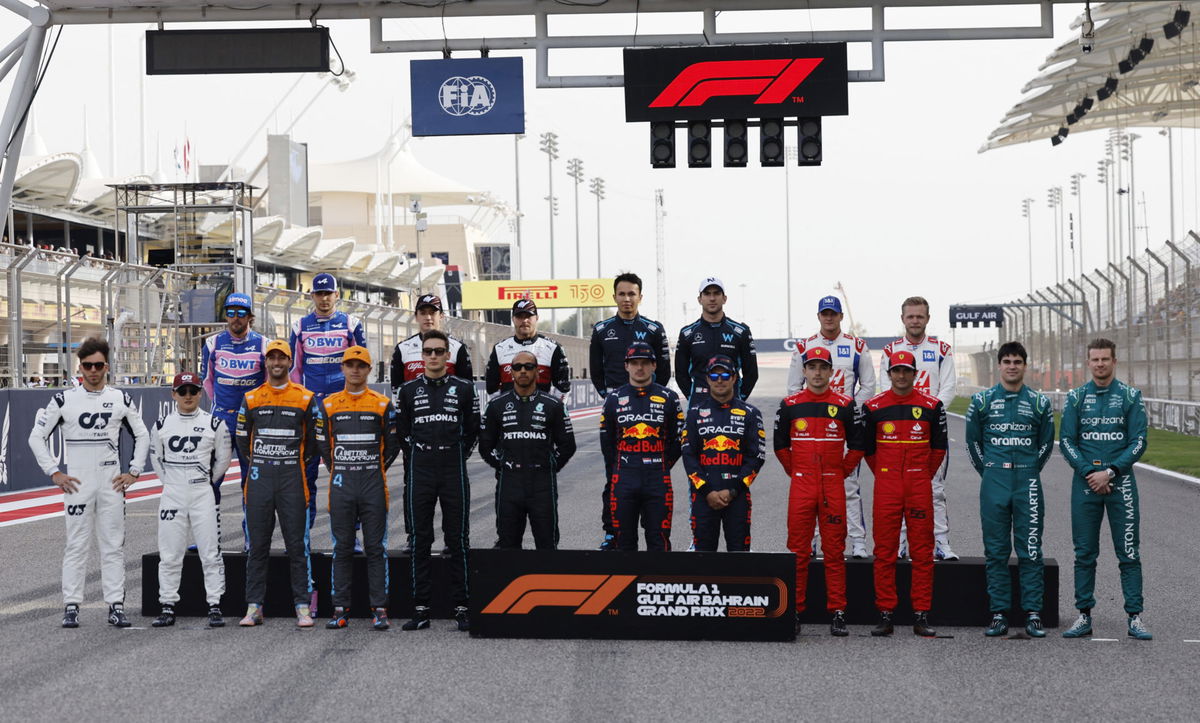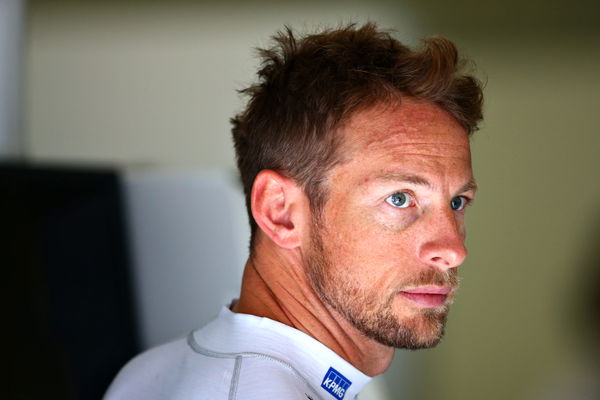
Reuters
Formula One F1 – Bahrain Grand Prix – Bahrain International Circuit, Sakhir, Bahrain – March 20, 2022 The drivers pose for a photo before the race REUTERS/Hamad I Mohammed

Reuters
Formula One F1 – Bahrain Grand Prix – Bahrain International Circuit, Sakhir, Bahrain – March 20, 2022 The drivers pose for a photo before the race REUTERS/Hamad I Mohammed
Ever so often you hear people say, “What’s so special about Formula One? They’re just driving a car that is built to go fast. Give me one and I could do that too.” Well, what is it that is preventing them from taking to the track? The answer is a super license. And, needless to say, it is not easy or cheap to get one.
Watch What’s Trending Now!
ADVERTISEMENT
Just as you need to possess a valid driving license before driving your vehicle on public roads, you need one to race in Formula One as well. There are certain prerequisites you need to fulfill before you obtain your driving license. Well, aspiring race car drivers have to do that too before getting a super license.
So what is it that makes a super license stand out? And how do you get one?
ADVERTISEMENT
How to get a Formula One Super License?
There are certain prerequisites that one has to fulfill to get an F1 super license. Anyone who hopes to get one must fulfill the following criteria:
ADVERTISEMENT
- Must be at least 18 years of age when contesting their first F1 race
- Own a valid driver’s license
- Own an International Grade A competition license
- Complete a minimum of 80% of two single-seater championship seasons
- Pass FIA’s theory exam that tests knowledge of F1 sporting codes and regulations
- Accumulate a minimum of 40 super license points in the previous three racing seasons (more on that later)
- Complete a minimum of 300 km in a maximum of 2 days in an F1 car as part of an official F1 session or in a test-certified national racing authority.
How much does a Super License cost?
Drivers have to pay a fee to obtain a Super License and subsequent renewals. The cost of renewal is decided on the basis of points scored in the previous championship season. While there is a fixed fee, the added variable fee keeps changing as per FIA’s regulations. Given the cost of each point, the renewal fees get exorbitant, with each driver paying in 6-figures.
ADVERTISEMENT
According to f1.fandom, Jenson Button paid a renewal fee of over $1,200,000 after his 2009 title win.

Getty
SPIELBERG, AUSTRIA – Jenson Button of Great Britain and McLaren Honda in the garage during practice for the Formula One Grand Prix of Austria at Red Bull Ring in Spielberg, Austria. (Photo by Dan Istitene/Getty Images)
The 2009 champion protested against FIA’s decision in 2012 to increase the renewal fee. He contended that when a license to drive on public roads costs the same for everyone, regardless of how many miles you drive, why should super licenses be any different?
ADVERTISEMENT
The renewal costs have changed since.
Top Stories
Who Is Oscar Piastri’s Father, Chris Piastri? Co-Founder of Multibillion Dollar Automotive Company

Who Is Lando Norris’ Girlfriend? Everything You Need to Know About Margarida Corceiro

Where Does Max Verstappen Live Stream?

Who Are Lando Norris’s Parents? Meet Adam Norris and Cisca Wauman

Hollywood Star Not Holding Back Against Zak Brown in Lando Norris Championship Fiasco

How to get Super License points?
The prerequisite of accumulating 40 super license points has to be completed in the previous 3 years. A driver is awarded super license points for competing in FIA-approved single-seater competitions. The magnitude of points awarded depends on the position a driver finishes in a given season.
ADVERTISEMENT

USA Today via Reuters
Apr 10, 2022; Long Beach, California, USA; Andretti Autosport with Curb-Agajanian driver Colton Herta (26) of United States during the Grand Prix of Long Beach at Long Beach Street Circuit. Mandatory Credit: Gary A. Vasquez-USA TODAY Sports
While the drivers that finish in the top 3 in the F2 competition are awarded 40 points, the drivers doing the same in IndyCar are awarded 40 for 1st, 30 for 2nd, and 20 for 3rd place finish. Every competition holds different weightage in terms of super points earned by drivers.
While drivers in higher-rated competitions can earn super license points for finishing as low as 10th, in the F4 championship, only the top 7 drivers get super license points.
ADVERTISEMENT
FIA rating F2 higher than IndyCar, in terms of super license points, has recently invited much criticism, but more on that later.
What is a Free Practice Super License?
In 2019, the FIA introduced the concept of Free Practice Super License. Drivers with 25 super license points, or higher, can obtain this license. The purpose that it serves is that teams can test academy and reserve drivers in practice sessions. For drivers, it’s an opportunity to get the 300 km that they ultimately need to get their super license.
ADVERTISEMENT
What are the penalty points?
Drivers accrue penalty points for causing collisions and unsafe driving. Each penalty point lasts for 12 months. For every 12 penalty points accrued in 12 months, a driver gets a one-race ban. For a driver who takes more than 5 penalty points, a 10-place grid penalty is imposed.
Read More: Amid Tense F1 Environment, American Team Principal Disregards Impact of Driver From the States
Causing too many incidents can even have your super license revoked. It is extremely rare to happen. In 2006, Yuji Ide had his super license revoked after causing too many incidents right from the start of the season. Ide’s super license was revoked two weeks after a collision with Christijan Albers.
The controversy around FIA’s preference for F2 over IndyCar
American IndyCar driver Colton Herta has been knocking on the F1 doors for quite some time now. He currently has 32 points, which makes him ineligible for the super license by 8 points. Red Bull’s Helmut Marko and McLaren’s Zak Brown have rated him highly. Had FIA given IndyCar the same recognition in terms of super license points, he would have obtained his super license and possibly be competing in F1.
Watch This Story: Vettel & Mick’s team got knocked out by Jimmie Johnson & Colton Herta
Zak Brown, taking a dig at FIA, had said, “If someone like Colton who’s won a lot of IndyCar races isn’t eligible for a superlicence then I think we need to review the superlicence system”.
ADVERTISEMENT
ADVERTISEMENT
ADVERTISEMENT

